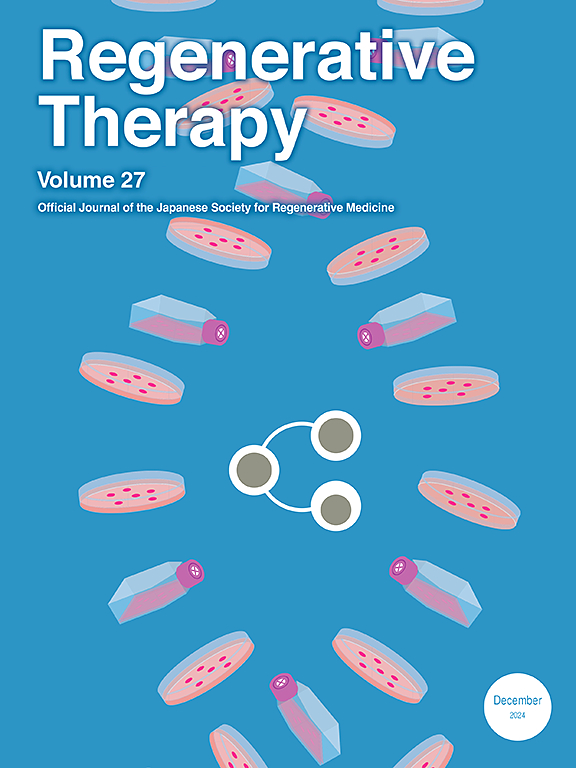IF 3.4
3区 环境科学与生态学
Q3 CELL & TISSUE ENGINEERING
引用次数: 0
摘要
导言最近的综述表明,与其他治疗方法相比,PRP 注射能更有效地改善疼痛和功能;然而,关于最佳注射次数还缺乏共识。我们旨在确定治疗骨关节炎(OA)症状的最佳注射频率和次数,检查 PRP 的长期效果和结构改善情况,并确定临床结果与影像学结果之间的相关性。参与者最多接受了六次 PRP 注射,并接受了 24 个月的随访。疼痛程度采用视觉模拟量表(VAS)进行评估;功能恢复采用膝关节损伤和骨关节炎结果评分(KOOS)进行测量。为了确定 PRP 是否能引起持续的结构改善,我们使用磁共振成像骨关节炎膝关节评分 (MOAKS) 来监测骨髓病变 (BML) 的变化。我们使用重复测量方差分析法对数据进行了分析,以确定疼痛和功能结果的显著变化。KL 1 级和 2 级患者在第四次注射后疼痛得到最大缓解;KL 3 级和 4 级患者在第五次注射后疼痛得到最佳缓解。在 24 个月的随访中,改善效果得以保持或增强。随着治疗次数的增加,尤其是第四次治疗后,效应大小也随之增加,Cohen's d值分别为-1.22、-1.28和-0.99(p < 0.0001)。本研究已在日本医学会临床试验中心的临床试验注册表(JMA-IIA00351)中注册。本文章由计算机程序翻译,如有差异,请以英文原文为准。
Optimal frequency of platelet-rich plasma injections for managing osteoarthritis: A longitudinal study
Introduction
Recent reviews suggest that PRP injections can improve pain and function more effectively than other treatments; however, consensus on the optimal number of injections is lacking. We aimed to determine the optimal administration frequency and number of PRP injections for management of osteoarthritis (OA) symptoms, to examine long-term effects and structural improvements with PRP, and to determine correlations between clinical outcomes and imaging findings.
Methods
This longitudinal study included 167 patients with knee OA, categorized using the Kellgren–Lawrence (KL) grading system. Participants received up to six PRP injections and were followed-up for 24 months. Pain levels were assessed using the visual analog scale (VAS); functional recovery was measured using the Knee Injury and Osteoarthritis Outcome Score (KOOS). To determine whether PRP can induce sustained structural improvements, we used the MRI Osteoarthritis Knee Score (MOAKS) to monitor changes in bone-marrow lesions (BMLs). Data were analyzed using repeated-measures analysis of variance to identify significant changes in pain and functional outcomes.
Results
VAS and KOOS scores significantly improved after PRP treatment. Patients with KL grades 1 and 2 exhibited maximum pain relief after the fourth injection; those with KL grades 3 and 4 showed optimal results after the fifth injection. Improvements were maintained or enhanced at the 24-month follow-up. The effect size increased as the number of treatments progressed, and especially after the fourth treatment, with a Cohen's d values of −1.22, −1.28, and −0.99 (p < 0.0001).
Conclusions
PRP injections administered at specific intervals can significantly reduce pain and improve function in patients with OA, with the required frequency depending on disease severity. These findings support the customization of PRP-treatment protocols based on individual patient profiles to maximize therapeutic benefits.
Trial registration
This study has been registered with the clinical trial register of the Japan Medical Association Center for Clinical Trials (JMA-IIA00351).
Unblinded study registration
This study has been registered with the clinical trial register of the Japan Medical Association Center for Clinical Trials (JMA-IIA00351).
Level of evidence
II.
求助全文
通过发布文献求助,成功后即可免费获取论文全文。
去求助
来源期刊

Regenerative Therapy
Engineering-Biomedical Engineering
CiteScore
6.00
自引率
2.30%
发文量
106
审稿时长
49 days
期刊介绍:
Regenerative Therapy is the official peer-reviewed online journal of the Japanese Society for Regenerative Medicine.
Regenerative Therapy is a multidisciplinary journal that publishes original articles and reviews of basic research, clinical translation, industrial development, and regulatory issues focusing on stem cell biology, tissue engineering, and regenerative medicine.
 求助内容:
求助内容: 应助结果提醒方式:
应助结果提醒方式:


